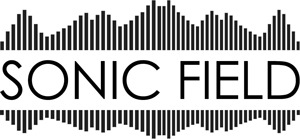Optical Sound Films 1971-2007. GUY SHERWIN
(Lux 2007)
Review by Jay-Dea Lopez
Those of us working in the field of sound are aware of the hierarchy that places visual art above auditory-based art. Consequently there is often an opposition between the two. The films of Guy Sherwin refreshingly turn their back on this position, forming a balanced relationship between vision and sound in a cinematic context.
Originally enrolled in painting at the Chelsea School of Art in the 1960s Sherwin soon gravitated towards the avant-garde work of the London Film-makers Co-operative. Since then Sherwin has been known for his live performances involving film. Here Sherwin manipulates strips of film, uniquely accentuating its sonic properties in creative ways and then displaying it through multiple projectors. Often the outmoded projectors create mechanical sounds that become part of the performance itself. In these aspects the culturally constructed division between vision and sound becomes meaningless – in Sherwin’s hands both mediums are inextricably entwined.
The 17 short films in “Optical Sound Films” are categorised into 5 sections – of these I found “Sounds with a Camera” and “Found Texts” particularly interesting as they strongly reflect Sherwin’s exploration of extracting sound from both visual and physical mediums. In “Newsprint” Sherwin glues newspaper onto 16mm film, the text from the newspaper appears on the screen in brief fragments whilst varying tonalities of static emanate from the speakers as the projector reads the paper. “Night Train” uses a 16mm camera positioned through an open train window to view the passing landscape. The shutter speed is slow rendering the countryside into long horizontal streaks of light. Sherwin converts the lights into different pitches and tones by finding a physical similarity between light and sound-wave patterns. The result is mesmerising.
In an essay included in the Optical Sound Films package Sebastiane Hegarty writes about the notion of synesthesia that naturally exists between the senses, stating it “appears sensible to presume that the eyes concern themselves with seeing, the ears with hearing and the skin with touching. Yet it is rare if ever that we perceive through the attention of one sense only. The senses perform in concert a ‘clump of sensation’ rather than distinct, independent and rarefied channels”. Although the relationship that exists between the senses is a recurring theme in the films of Sherwin, Sebastiane Hegarty’s observations are deeply relevant to any contemporary art practitioner.
Guy Sherwin’s “Optical Sound Films” inspires its audience to observe and interact with raw materials in a holistic way – this is definitely an exciting avenue for “sound artists” to explore. In his works Sherwin demonstrates that the traditionally visual medium of film is capable of being a unique sounding object. For several decades critics have predicted the death of cinema yet Sherwin and his contemporaries have shown it to be a dynamic entity that is alive and well. Sherwin’s success illustrates that an audience can enjoy being enveloped in simple waves of light and sound, bridging the division between visual and auditory art.
[Guy Sherwin, photo courtesy of Diagonal Thoughts]



